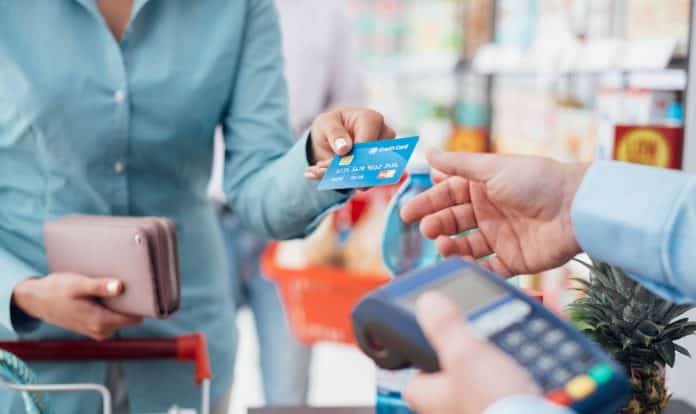
Sometimes, events happen out of our control. Some of these events can be positive and improve our lives–in other cases, negative circumstances can occur. Among these negative events are natural disasters. Disasters can be impactful on people’s lives. We cannot predict all of them, nor predict the extent of their impacts.
The government is mindful of the fact that people may need extra assistance when such disasters happen. Among the programs the government has in place to help during those trying times is the Disaster Supplemental Nutrition Assistance Program (D-SNAP).
Understanding D-SNAP
The government creates programs that serve people who need them in times of crisis. Programs such as D-SNAP focus on providing necessities, such as food, to those who might otherwise struggle to have it. D-SNAP provides food assistance to eligible low-income households who may have suffered food loss and/or other losses due to a natural disaster. Before states start offering D-SNAP to eligible applicants, they must first receive an Individual Assistance declaration from the president. After that, states must request and receive approval from the USDA’s Food and Nutrition Service (FNS).
If approved, eligible D-SNAP beneficiaries will receive an Electronic Benefits Transfer (EBT) card. They can use these EBT cards to get authorized food items at FNS-authorized stores. EBT cards operate the same way debit cards do!
Eligibility For D-SNAP
D-SNAP provides help to those who suffered losses due to natural disasters. For that reason, eligibility for the program works differently from other assistance programs. You may be eligible to receive D-SNAP benefits if you are dealing with the following as a result of a disaster:
- Repairs of your home
- Repairs of your business
- Expenses for a temporary shelter
- Expenses for evacuation
- Costs of relocation
- Costs of personal injuries
- Loss of income or inability to access income due to a natural disaster (That includes getting terminated, delayed/reduced receipt of income)
- In some situations, losing food during a disaster due to power outages or floods
Good news: if you already receive SNAP benefits, you may request a supplement when your state operates D-SNAP. If eligible for the supplement, the government will increase your benefits to the maximum they allow for the size of your household. There are a couple of conditions you must satisfy to make that happen:
- You currently get less in benefits than the maximum allowed by the government for your household size.
- You spent/lost money due to a disaster.
How To Apply For D-SNAP
When going through a natural disaster, it’s completely understandable that people would be confused and unorganized. Some may even feel like their situation is hopeless. D-SNAP can be useful, as it shines hope on what is a difficult situation. The government would likely inform the public about the program through the press and local media before they start operating it. The kind of information the government would give people includes how to apply, eligibility qualifications, and days of operation. It can also include more information about your local area. So be on the lookout for announcements from your local government.
Other Useful Assistance Programs During Natural Disasters
D-SNAP is not the only assistance program the government offers to people going through disasters. You may have other benefits through other disaster-related assistance programs. Some of these programs will help lift the burden of your financial responsibilities until the disaster’s impact passes. Others will help you get back on your feet. Let’s talk about a couple of those programs:
- The Disaster Assistance and Emergency Relief Program for Individuals and Businesses
- Disaster Unemployment Assistance
Disaster Assistance and Emergency Relief Program for Individuals and Businesses
Eligible applicants may receive extensions on the duration of time to file and pay taxes. You can take the time to learn more about the program through the Internal Revenue Service (IRS) News From Around the Nation. Simply choose the state in which you live and check the list of returns and payments that are eligible for an extension. You should also find information on other tax-related benefits.
To qualify for the Disaster Assistance and Emergency Relief Program for Individuals and Businesses, you need to meet the following requirements:
- Live in a county that the IRS considers eligible for disaster tax relief
- Update your home address with the IRS
A program perk is that if you qualify, your account is automatically coded for filing and payment relief. If you have any further questions about the Disaster Assistance and Emergency Relief Program for Individuals and Businesses, you should contact the IRS disaster hotline at 1-866-562-5227.
Disaster Unemployment Assistance
Disaster Unemployment Assistance aims to help those who lost their employment or had their employment interrupted due to a natural disaster. The program provides temporary benefits to those who qualify. Here are the program requirements:
- A presidentially-declared disaster must have interrupted your employment, or must have caused you to lose your job.
- You do not qualify for the standard unemployment insurance benefits.
Let’s assume you lived, worked, or were scheduled to work in a qualifying area. The government will focus on the following conditions when deciding on your eligibility for the program:
- You lost your job
- Your place of work no longer exists
- Reaching your workplace is no longer possible
- The job site suffered damages that make it unable to perform your job
- A job you were about to start no longer exists due to a disaster
- Your disaster-related injuries stop you from being able to do your job
- If head of household died due to the disaster and you had to become the major support for the household
People who receive benefits from this program must be able to go back to work unless they suffer from a disaster-related injury. You will have to wait until your state announces the availability of the program before you can file a claim. It is beneficial to reach out to your state’s unemployment agency as soon as you can. Some states may only allow you to file your claim online or over the phone.
Conclusion
Natural disasters can have devastating effects on people’s lives. These disasters are often unpredictable. People who suffer from the impacts of such disasters may find themselves losing resources that help them cover necessities. They may also end up paying more money to try and return their lives to their pre-disaster status.
For that reason, the government has a lot of programs in place that aim to help those who suffer from these natural disasters. A prime example is D-SNAP. The program aims to help victims of these disasters pay for important necessities like groceries.
If eligible, D-SNAP applicants will receive EBT cards that they can use, as they would debit cards, at FNS-authorized retail stores to buy qualifying food items. Besides that, the government has programs that offer financial relief and aid to victims of those disasters. These programs include The Disaster Assistance and Emergency Relief Program for Individuals and Businesses and Disaster Unemployment Assistance.





















